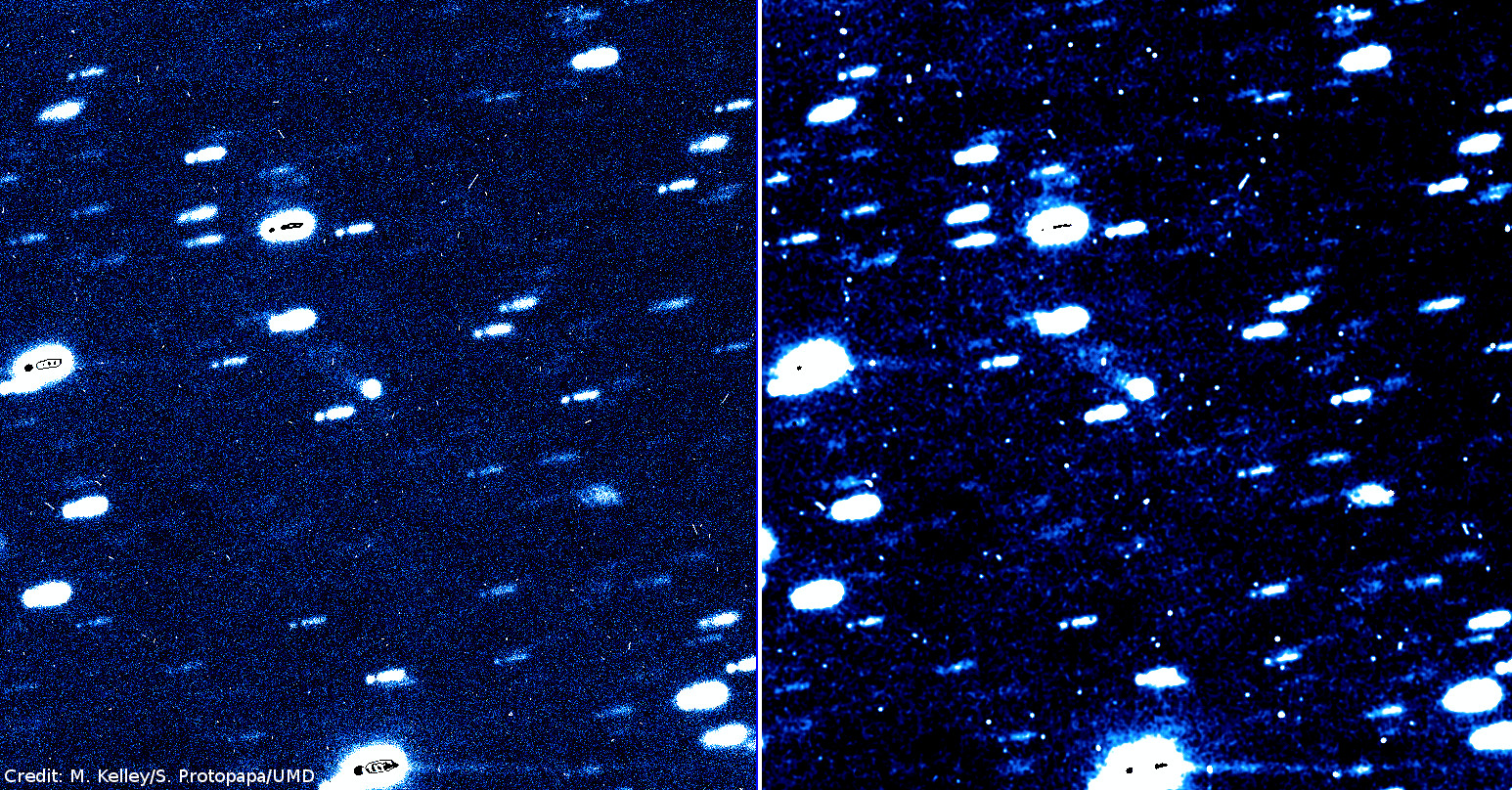Discovery of Activity at Asteroid 2016 BA14
February 15, 2016
The orbit of asteroid 2016 BA14 has been shown to be remarkably similar to that of comet 252P/LINEAR 12. With both objects headed for close approaches to the Earth in March 2016, we decided to look closely at asteroid BA14, and guess what we found: a comet's tail!
Asteroid 2016 BA14 was discovered by the Pan-STARRS survey on 2016 Jan 22. At the time the object was 19th to 20th magnitude, astronomer-speak for 250,000 times fainter than the faintest stars the unaided eye can see in a dark skies. After a few days of additional observations, it was designated a potentially hazardous asteroid due to its tendency to make close approaches to the Earth [1]. The next close approach will be on 2016 March 22, when it swings by us at a distance of 3.5 million km (9 lunar distances) [2]. That distance is not unusual for asteroids in near-Earth space, but it is something we want to keep track of. However, more interesting than the Earth close approaches is the orbit itself.
In an e-mail to the Yahoo Comets Mailing List, Denis Denisenko noted an eerie similarly with comet 252P/LINEAR 12, which was already poised to make its own close approach to the Earth in March. The orbits are shown in the figure below. Comet LINEAR 12 was discovered in the year 2000 during a previous close approach to Earth. On March 21st, the comet will make its closest approach yet, passing just 5.3 million km (14 lunar distances) from the Earth [3]. Not notable for an asteroid, but historic for a comet! Because there are fewer comets in near-Earth space, comets rarely pass so closely. My colleagues Nalin Samarasinha and Jian-Yang Li and I estimate LINEAR 12's passage to be the closest known comet flyby since IRAS-Araki-Alcock in 1983. Not willing to let such an opportunity pass us by, we have secured 6 orbits of Hubble Space Telescope time to snap some high-resolution photos during the close approach.
What are the chances of such an unusual comet and a random asteroid having a similar orbit and Earth close approach? Probably very small! A lot of suspicion was starting to be cast on this so-called asteroid. Was it really a lifeless hunk of rock, or an active mixture of ices and dust like LINEAR 12? Matthew Knight and I looked into observing BA14 with Lowell Observatory's Discovery Channel Telescope, a 4.3-m telescope near Happy Jack, AZ. We both had separate observing time scheduled in February and decided to take a few images of our own. Sure enough, the object had a faint tail, and we reported our findings to the Minor Planet Center. Asteroid 2016 BA14 is now known as comet P/2016 BA14 (PanSTARRS), with cometary activity discovery credit going to us and our co-observer Silvia Protopapa [4]!

P/2016 BA14 (Pan-STARRS)
M. Kelley/S. Protopapa/University of Maryland (CC BY 4.0).
Images by Michael S. P. Kelley and Silvia Protopapa (UMD) confirming Matthew Knight's initial discovery of a cometary tail behind "asteroid" 2016 BA14. The image on the left is a combination of five 300-s exposures tracking the asteroid at its computed non-sidereal rates. The image on the right is a smoothed version to help enhance the tail, which is apparent at the 10 o'clock position. Data were taken with the Large Monolithic Imager at the Discovery Channel Telescope on 2016 Feb 13 (UT) through the SDSS r' filter.
References
- MPEC 2016-B79
- P/2016 BA14 (PANSTARRS) Close Approach Data, NASA JPL HORIZONS (retrieved 2016 Feb 15)
- 252P/LINEAR Close Approach Data, NASA JPL HORIZONS (retrieved 2016 Feb 15)
- Knight et al. 2016. IAU Central Bureau Electronic Telegram 4257.